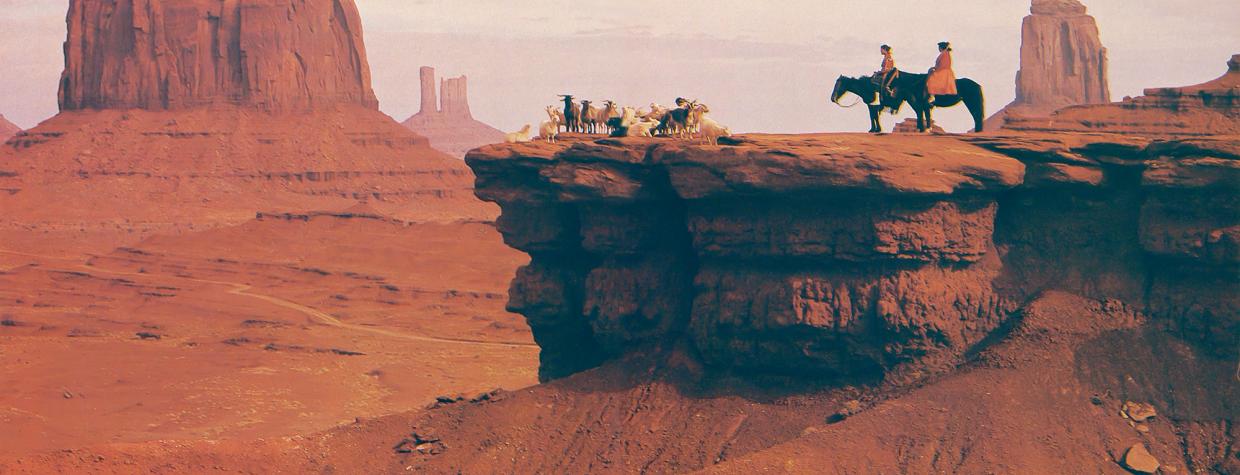This story was first published in the September 1981 issue of Arizona Highways.
HE’S KNOWN WORLDWIDE for his landscape photography. But hardly anyone knows about the role Josef Muench and his camera played in making Monument Valley a key Hollywood location set ... and a mecca for thousands of tourists annually.
It all began in 1938, when Josef first met Monument Valley Indian trader Harry Goulding and his wife, Mike. The Gouldings were determined to travel to Hollywood and lure moviemakers to their splendid — but virtually unknown — valley of monuments. For the Gouldings, it was a move designed to lessen the economic plight of the Depression wracked Navajos, their friends and neighbors.
Harry reasoned that words alone would turn the trick with the movie moguls. But his new friend Josef Muench disagreed and suggested a somewhat different approach. (It would prove later to be a decisive element in the game for big movie bucks ... and much more.)
“You would just use your words to express the country?” Muench asked Harry. “You have nothing to show your backyard, the way you feel about it?” (Josef was thinking about the hundreds of black and white photos of the Valley he had made in prior years.)
“How about if I make you up ... I called it an album,” he said. “I glued two pictures back to back — 24 in all — punched holes for a spiral just like the typical school notebook, and put a plastic cover on it so you could see, at once, the first pictures.” His wife, Joyce, added captions.
Harry and Mike went to Hollywood that year, as planned, showed Joe’s pictures, among a host of others, to John Ford at United Artists ... and the rest is history.
Until Goulding spread out his collection of Valley photos in Ford’s plush Hollywood office, Monument Valley had been a well kept secret. But Stagecoach, Ford’s first film shot there, changed all that, virtually overnight.
In a very short time it became a favored movie location and a setting familiar to people across the world.
In the wake of the movie caravans, visitors also started to arrive, to see for themselves the magnificent buttes and colorful background shown so clearly in Muench’s photographs and on theater screens. And, as Harry Goulding had hoped, everyone on the reservation profited from the work on the movie productions and from the tourist trade.
Like Muench’s own genius, Monument Valley evolved over a long period of time. Stone structures and exceptional men are like that: always changing, never finished.

